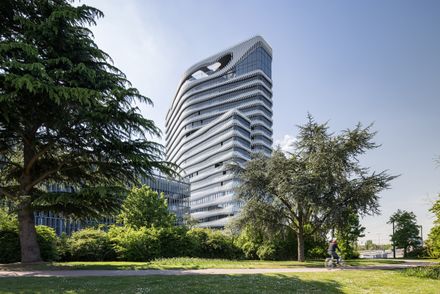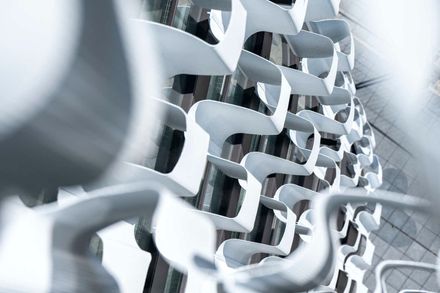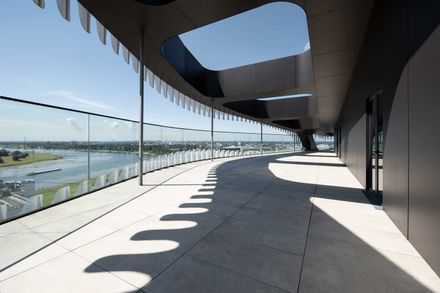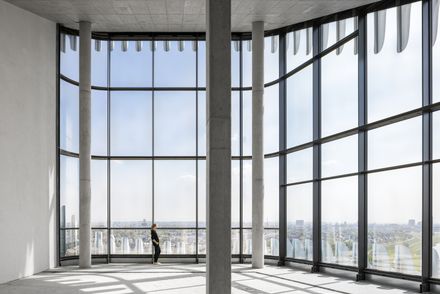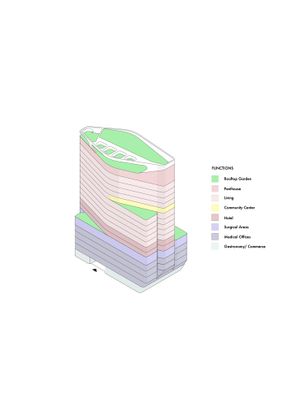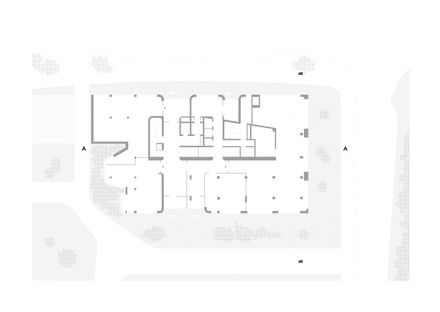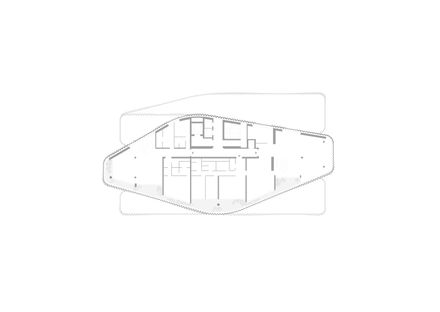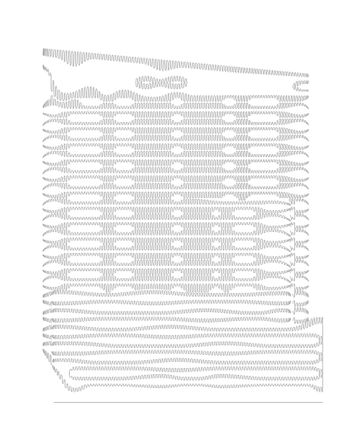
ZIPPER RKM 740 Tower
ARCHITECTS
J. Mayer H. Architects
BUILDING SERVICES
Ingenieurbüro Liebert, Winter Ingenieure, Ingenieurbüro Buss
IRE SAFETY ENGINEERING
Corall Ingenieure GmbH
PARTNERS IN CHARGE
Jürgen Mayer H., Andre Santer
STRUCTURAL ENGINEERING
AWD Ingenieure
BUILDING PHYSICS
Santer Bauphysik
ACOUSTIC CONSULTANTS
Peutz Consult GmbH
ELECTRICAL ENGINEERING
ibb-Burren&Deuring Ingenieurbüro GmbH
LIGHTING PLANNER
lichttransfer, Büro für Lichtplanung
LANDSCAPE ARCHITECTS
RMP Stephan Lenzen Landschaftsarchitekten GmbH
FACADE PLANNING
Ebener GmbH
PROJECT LEADER
Dr. Paul Angelier
ARCHITECT ON SITE
Höhler + Partner, Aachen
DESIGN TEAM
Ana I. Alonso, Isabell Fogden, Matthias Gotter, Max Margorskyi, Anna Pidhorna, Marta Ramirez Iglesias, Christine Rosemann, Jens Seiffert, Lilly Czok, Paul RIndt
LOCATION
Düsseldorf, Germany
CATEGORY
Mixed Use Architecture, Apartments
Text description provided by architect.
In recent years, increasing urban density has led to new kinds of hybrid high rises.
The project combines various medical practices and residences on the former park grounds of Dominikus-Krankenhaus in Düsseldorf-Heerdt.
The synergy effects thus achieved with comprehensive health grant the existing hospital transregional importance as the “prototype of a hospital for the future.”
Right on the Rhine, a new campus combining housing and health facilities is being erected on the former park on the grounds of Dominikus-Krankenhaus, a hospital in Dusseldorf-Heerdt.
The hybrid high-rise Zipper is the striking emblem of this transformation, visible from afar. J.MAYER.H was the winner of the international design competition for this joint residential and health unit.
The unique panorama view over the Rhine and Dusseldorf makes the building striking.
The conception of the perforated metal curtain façade allows for a gentle arrangement of open and closed areas.
On the east, south, and west sides of the building, the wavy shell opens generously while also offering shade and wind protection.
On the north side, the façade is closed to provide sound insulation from the traffic.
Like a zipper, the transitions between open and closed are gradual and allow for flexible adaptation during the process of development over the years.
The combination of group practices, specialists, and therapists in the lower six floors of the building offers synergies with the existing hospital to create a medical health center with an importance that goes beyond the local region.
The fourteen floors above feature a vital mix of various residential forms resulting in transparent, light-flooded living spaces with generous terraces, balconies, loggias, and rooftop gardens.



